The foxes usually turn up at 7:45pm on the dot…this time they arrived so early they were watching us…! It’s only been a week but the opportunties and quality of the shots we could get has improved massively.
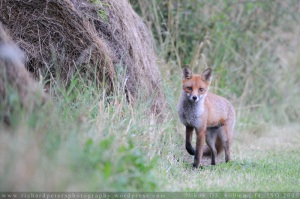
Photo ops improving. ISO 2000, 1/160
Always be prepared for the unpredictable!
We usually get down the field and set up for about 6:45-7pm so we are fully ready for 7:45 when the foxes usually turn up. However this time, my second visit down there, we got there at 7pm and were busy chatting to pass the time when my friend glanced over and noticed one of the foxes sitting there on a hay bail just staring at us…at 7:10pm! Needless to say as we reached for the camera’s he just slowly and casually jumped down and vanished in to the bushes behind as if to say ‘you’ll have to be quicker next time’, and didn’t come out again for a good 25 minutes. It’s certainly taught us a lesson in that you can never predict what animals in the wild will do, even when you think you have worked out their patterns they can still surprise you! So, from now on we will get set up earlier and pay more attention rather than sit there casually chatting and waiting for what we thought was the time they would come out from.
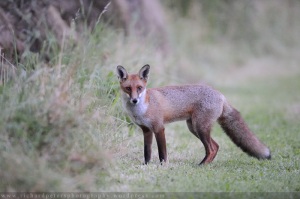
D3, 600mm, f4, 1/100, ISO 12800
Getting used to the Range Rover
My friend has been going down to the foxes location every evening after work just to get them used to seeing the Range Rover down there and it seems to be paying off because they now seem far less bothered by it and come a lot closer. In fact one even appeared from the tree’s and walked across the path not 8 foot from us. Whereas the first time we were there they would look over at us quite a bit, now they only look over when they hear the camera’s go off, and even then it’s not every time. Hopefully they won’t get so accustomed to the sounds of the camera’s that they stop looking altogether! As nice as it will be to capture images of them being natural it would still be good to capture some lower ISO portraits. Speaking of which…
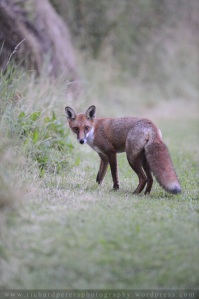
600mm, 1/100, ISO 12800
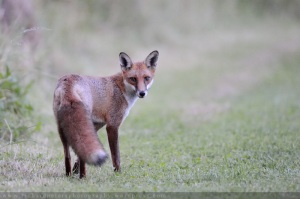
600mm, 1/80 ISO 12800
A lesson learned with the D3 focus fine tune!
Although I set up my focus with the 600mm using a test chart and the D3 fine tune to get things perfect, I realised after taking my first couple of shots that the focus is out quite a bit at infinity focus now! So a couple of really nice shots were ruined by a slight front focus. I adjusted it quickly before I carried on shooting but I wish I had known sooner. Looking back at my first fox shots from the week before I thought they were soft due to low light, high ISO and slow shutter but I think now the front focus was what really spoiled them!
Excited about the coming months
With the foxes already getting used to the car and paying less attention to us, things are looking good for the coming months. Once we’ve had a few more successful shoots from the comfort of the car we are going to start trying to set up remote triggered camera’s, at first with something like the 28-70 just to give as much chance of getting them in frame as we can. It’s all just trial and error for now but things are definitely looking up and after capturing some nice images so soon and with the foxes now coming out with some daylight to spare (just!) things should only get better from here on out!
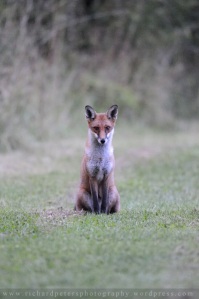
600mm, 1/100, f4, ISO 12800








